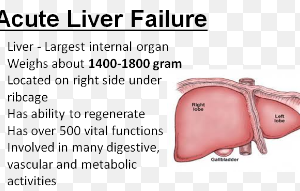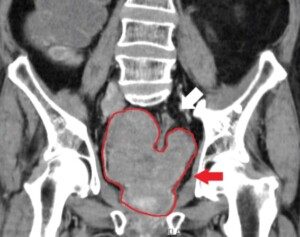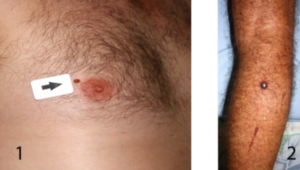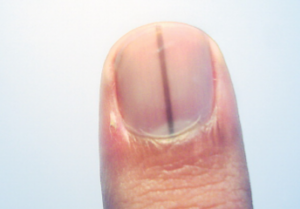The opposite of a V taper build – that opposite being a waist-to-height ratio of over 0.5, is a strong predictor of chronic heart failure – much more accurate than BMI.
Body mass index doesn’t show how fat is distributed throughout your body.
It can’t differentiate between fat stored around vital organs (the most dangerous location for excess fat) and fat stored elsewhere such as the hips and thighs.
A study presented at Heart Failure 2025, a congress hosted by the European Society of Cardiology, reports that waist-to-height ratio is a strong predictor of heart failure (HF) risk.
The research was led by Dr. Amra Jujic from Lund University in Malmö, Sweden.
Waist-to-height ratio is considered better than BMI at reflecting fat stored around internal organs —also known as central or visceral fat — which is closely related to heart related conditions.
While higher BMI has been paradoxically linked to better outcomes in those with HF, this trend does not hold when using waist-to-height ratio.
Waist-to-height ratio and Chronic Heart Failure

The researchers analyzed data from 1,792 people who took part in the Malmö Preventive Project.
These participants were between 45 and 73 at the start of the study and were selected so that one-third had normal blood sugar, one-third had slightly elevated levels and one-third had diabetes.
The group was tracked over time to observe who would go on to develop heart failure.
The average age of participants was 67, and 29% were women.
The median WtHR was 0.57, with most values falling between 0.52 and 0.61.
Over a median follow-up time of 12.6 years, 132 subjects developed heart failure.
The findings showed that a higher waist-to-height ratio was clearly linked to a greater risk of heart failure.
For every standard deviation increase in WtHR, the risk rose by 34%, even after adjusting for other factors that could influence outcomes.
When participants were divided into four groups based on their waist-to-height ratio, those in the highest group — who had a median WtHR of 0.65 — were found to have nearly three times the risk of developing chronic heart failure compared to those in the three lower groups combined.
Dr. John Molvin, another researcher involved in the study, noted that the average WtHR of the group was well above 0.5, which is generally considered the threshold for increased health risk.
- He pointed out that ideally, a person’s waist size should be less than half their height.
Obesity Not Necessary for Having a Poor Waist-to-Height Ratio

A person can be “thin” and have a WtHR over 0.5.
When WtHR is well under this threshold, the body takes on a characteristic “V taper” shape.
With a V taper, the shoulders are wider than the waist.
The “V” doesn’t have to be pronounced in order to have the much coveted V taper build, such as the middle age man at the top of this article.
- An extreme example of the V would be a professional bodybuilder, but one need not achieve these proportions in order to have a WtHR of under 0.5.
An “out of shape” or sedentary person who never exercises will face the extreme likelihood of never having a healthy waist-to-height ratio.
In fact, if your lifestyle is sedentary and includes never working out, then don’t count on being healthy long-term.
Based on the research, we can deduce that aiming towards acquiring a V taper (i.e., WtHR under 0.5), can go towards lowering your risk of developing chronic heart failure.
Key Muscles that Contribute to a V-Taper
- Latissimus dorsi (lats): Gives width to the upper back.
- Deltoids (shoulders): Create broadness across the top of the torso.
- Trapezius (traps): Adds to upper back and neck definition.
- Abdominals and obliques: Keeping the waist tight and lean accentuates the taper.
Achieving a V taper build requires a combination of targeted strength training and fat loss.
The goal is to broaden the shoulders and upper back while maintaining a narrow, lean waist.
Again, this need not be exaggerated, such as with competitive bodybuilders on stage.
The goal is to get that waist-to-height ratio under 0.6, preferably closer to 0.3 or 0.4.
To develop the upper body, focus on exercises that build the lats, deltoids and trapezius muscles, such as lat pull-downs, barbell rows, seated rows, shoulder and chest presses, and pull-ups.
These moves enhance width across the shoulders and back.
At the same time, keeping the waist slim is crucial, which means incorporating fat blasting workouts and maintaining a healthful diet of controlled portions to reduce body fat.
Burn Baby Burn

Freepik/ArthurHidden
Intense strength training that targets the legs helps burn fat efficiently because the legs have the biggest muscle groups.
When these large muscle groups are heavily engaged during exercises like the squat, deadlift, leg press and weighted lunge, they require a significant amount of energy, which increases overall calorie expenditure both during and after the workout.
This process elevates your heart rate and triggers what’s known as excess post-exercise oxygen consumption (EPOC), or the “afterburn effect,” where your body continues to burn more calories for hours after training.
Additionally, intense leg training stimulates the release of anabolic hormones like testosterone and growth hormone, which promote muscle growth and fat metabolism throughout the body.
Because muscle tissue burns more calories at rest than does fat tissue, increasing leg muscle mass can also boost your resting metabolic rate, making fat loss more efficient over time – and this includes in the midsection.
And no, you don’t have to get bodybuilders’ legs to achieve this higher resting metabolic rate.
Look around at men and women who have V taper bodies. They aren’t necessarily “overdone” with muscle.
They simply have a V shape to their body: shoulders wider than their waist.
You’ll note that those with a V taper have a firm or sometimes “hard” look about their body, often with notable muscle definition.
They’ll have the appearance of athleticism, rather than a “skinny fat” or mushy soft look.
 Lorra Garrick is a former personal trainer certified by the American Council on Exercise. At Bally Total Fitness, where she was also a group fitness instructor, she trained clients of all ages and abilities for fat loss and maintaining it, muscle and strength building, fitness, and improved cardiovascular and overall health.
Lorra Garrick is a former personal trainer certified by the American Council on Exercise. At Bally Total Fitness, where she was also a group fitness instructor, she trained clients of all ages and abilities for fat loss and maintaining it, muscle and strength building, fitness, and improved cardiovascular and overall health.
.










































